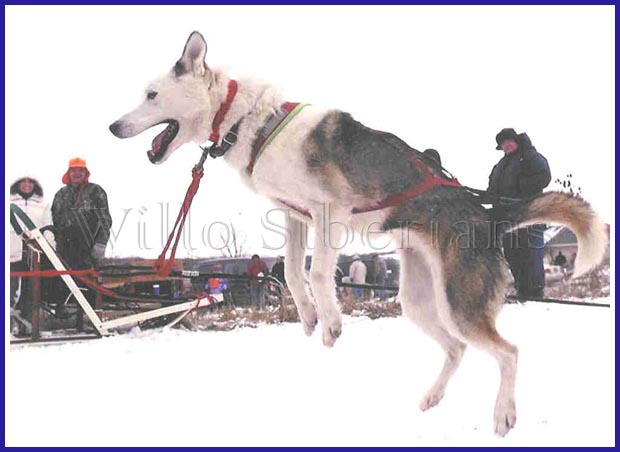 There is SO much more to breeding than just putting a
male and a female together! There is SO much more to breeding than just putting a
male and a female together!
There
is no such thing as a perfect specimen. Never has been, never will be. But
reputable breeders spend weeks and months, sometimes YEARS, with pedigrees, the
use of DNA (now), and every other factor available to them, striving to improve
their particular breed...to eliminate faults.
A
reputable breeder tests both the sire and dam before proceeding, for not only
brucellosis, but does hips and certifies them, will not breed a dog with less
than a GOOD rating from OFA (prefers EXCELLENT), and does a thorough eye exam
from a canine ophthalmologist, as well as not breeding any dogs that have
relatives which might exhibit epilepsy or other congenital defects.
So
many backyard breeders will say that they are "only breeding pets, so
what's so important about all that testing?" I think it's important to
stress the fact that pet puppies from a litter whose parents have had
"all that genetic testing" done up front will have a better chance of
living long, healthy, disease- and problem-free lives. The breeder must
ensure that the dogs selected to produce puppies are not only free from genetic
faults, but that any relatives of theirs are also clear. If the sire and/or dam
has poor hips, why risk producing puppies that might end up requiring surgery
to repair the problem, or worse, having to be euthanized because they are so
crippled that they will never live a normal life.
All
of those breeding without concern for genetics are in it for just one thing --
THE ALMIGHTY DOLLAR! It's the bottom line way of thinking. The product is just
that, a product. It's not a living, breathing creature that will rely on the
goodness of the human being for the rest of its life.
For a reputable breeder, it's not about making money, for sure. A reputable
breeder spends more on that litter, from the cost of the stud dog, to all the
weeks of caring for the bitch, to raising the puppies, etc., to do more than
just break even.
When
I decided to breed my Champion bitch (who was also an Obedience High In Trial
at a National Specialty), it took me eight months to find the right sire. I
didn't have one in my kennel that fit, because I wanted to "fix" some
of her "faults." She was not as pretty in the head as I liked, and
she had a great rear end but a bit straighter in the shoulders than preferred.
I used a stud dog from ALASKA to get what I wanted!
We ended up breeding her twice, two years apart (NEVER EVER on consecutive
heats, and preferably longer than that is the "rule"). Actually I had
her in for a check-up after her first litter and was going to have her spayed,
but my VET said he thought I might want to re-think that, seeing what she
produced the first time (two Champions out of five pups). So we did, and the
second litter was eight, with four eventually finishing their championships,
one in Canada and one in ITALY!
A
QUALITY Hobby Breeder would definitely not produce more than 35 puppies a year.
The average Siberian Husky litter once was perhaps four, but with increased
nutrition and all the other aspects of quality vet care, that has risen to six
or seven in a litter. The people I know locally probably breed once a year,
perhaps not even that often, have only a couple of good bitches, and they are
always show quality which are then bred to a sire of equal or better quality.
Recently a good friend of mine bred a litter (now seven months old), and four
of the six puppies are not only show quality but already winning in the ring!
Recently,
I heard l about an interesting program that was given by the Siberian Husky
Club of Greater Chicago, which proved without a shadow of a doubt that what we
did back then was right. The club presented a forum with an AKC judge and
numerous "specimens" of the Siberian Husky. The judge began at the
beginning of the standard and went over it point by point, bringing each dog
involved and describing that specific point and how the dog either followed or
was incorrect as to that point. When it came down to movement, one of the dogs
that was evaluated was our Rosie, the child of two of Bill's leaders, Cher (who
is still living here at age 17) and Missile. The judge stated that Rosie had
the best "front end" of any dog in that room, and that her movement
both coming and going was excellent. ROSIE IS 13 YEARS OLD! The judge refused
to believe it, kept saying "NO WAY is that dog 13, she might be 7 or 8,
but 13?"
I bred and showed four conformation champions, but quite honestly, that
statement is more valuable than any Best of Breed we ever earned! The Siberian
Husky is a WORKING dog, and to have an AKC conformation judge give one of our
"racing kids" that compliment is a thrill I shall never forget.

Here
is a picture of Rosie during her active racing career. Yes, all four feet are
off the ground! She would do that as soon as she was hooked into the team, her
method of saying "let's get this show on the road!" And she'd
continue to leap until the hook was pulled and the team was moving, then it was
down to business.
Tell
me we "make" these dogs work? The best analogy I've ever heard when
someone complains that sled dogs are "forced" to pull: you can't push
a rope! These dogs do what they do because they love it!
|
|


